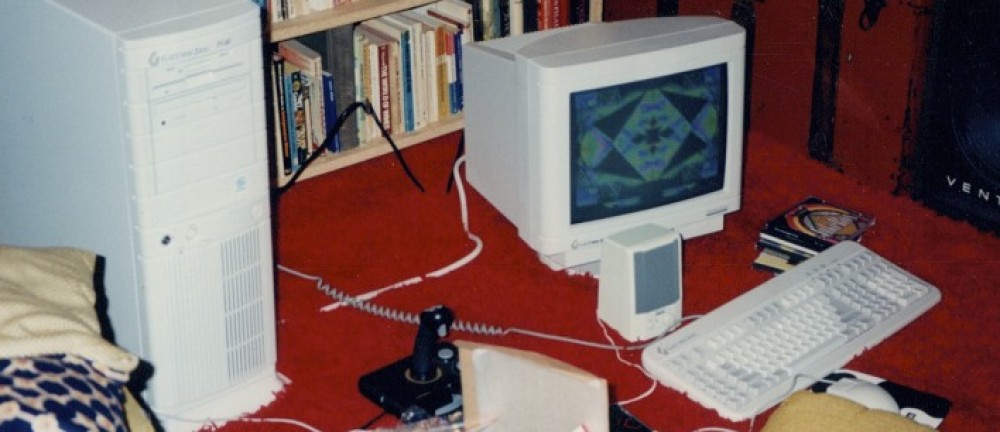By Nathan Weaver Olson, DCL Graduate Assistant
GETTING AN OMEKA ACCOUNT
The first step in creating an Omeka exhibit is to set up an Omeka account. Currently, the best way for individuals connected with the University of Minnesota to do this is to contact DASH Domains and open an account through them. Check out the DASH website to see if this is an option for you. If you have access to a web server, you can actually download Omeka directly. Alternatively, Omeka will host your collection at Omeka.net. Omeka.net’s basic plan will give you 500 MB of free storage, although more robust storage options are available for an annual fee.
ADDING ITEMS
Once you have Omeka up and running, the first step in building an Omeka exhibit is to add the digital objects or “items” you wish to include in your exhibit to your Omeka account. Do this by clicking “Add an Item”, the green button at the top of the screen. Once you have a new item, you need to add the necessary metadata (i.e. data about the data), which you can do by clicking through the various tabs entitled “Dublin Core” metadata, “Item Type Metadata”, “Files”, “Tags”, and “Map”. For the “Mud-Brick Mosques of Mali” exhibit I added some twenty-three items to our account.
ADDING AN EXHIBIT
Once you have added all of your items to your Omeka account, you can add a new exhibit to your account by clicking on the “Exhibits” tab and then clicking “Add an Exhibit”. The look of an individual exhibit is largely controlled by the exhibit theme. Several themes come pre-loaded in Omeka, but these are just a fraction of the themes available. In fact, users can design themes of their own. In my case, I wanted to use a theme that would allow me to insert my own background image and logo. I settled on the “BigStuff” theme and then added it to our Omeka account using the DASH Domains File Manager.
THEME CONFIGURATION
When you create a new Omeka exhibit, the first page available to you is the “Edit Exhibit” page, where you select and configure the exhibit theme, design the exhibit’s main page, and add new exhibit pages to the site. In the image below, my theme, “BigStuff”, is clearly visible in the drop down list.
Themes can also be further configured to fit your particular aesthetic and presentation interests. “Big Stuff” allows me to insert my own background image, logo, and header images. In my case, these were images that I designed in Photoshop before uploading them to Omeka.
ADDING PAGES
 The content of my exhibit is stored and organized using different pages, accessed through the “Edit Exhibit” link. Each new page includes title and “slug” fields, but users are then able to add one or more blocks of content layouts entitled “File with Text”, “Gallery”, “Text”, “File”, “Geolocation Map”, “Neatline”, and “Neatline Time”.
The content of my exhibit is stored and organized using different pages, accessed through the “Edit Exhibit” link. Each new page includes title and “slug” fields, but users are then able to add one or more blocks of content layouts entitled “File with Text”, “Gallery”, “Text”, “File”, “Geolocation Map”, “Neatline”, and “Neatline Time”.
 With the exception of the “Text” layout, all of these page options allow you to pull the “Items” you created into the exhibit. When you add an item, you can also add a caption below the image. I chose to make every caption a link back to the original image in DCL Elevator. My principal goal was to showcase images from John Archer’s collection, but I was also able to locate individual mosques in space as well using Omeka’s “Geolocation Map” layout option.
With the exception of the “Text” layout, all of these page options allow you to pull the “Items” you created into the exhibit. When you add an item, you can also add a caption below the image. I chose to make every caption a link back to the original image in DCL Elevator. My principal goal was to showcase images from John Archer’s collection, but I was also able to locate individual mosques in space as well using Omeka’s “Geolocation Map” layout option.
PAGE ORDER
 Finally, when you are on the “Edit Exhibit” page, it is easy to rearrange page order and even nest some pages below others. In my case, I have five principle pages: “Mosque Design Elements”, “Regions and Styles”, “Image Gallery”, Further Reading”, and “About the Photographer”. Yet several of these pages contain sub-pages, and sub-sub-pages, as a tool for organizing content.
Finally, when you are on the “Edit Exhibit” page, it is easy to rearrange page order and even nest some pages below others. In my case, I have five principle pages: “Mosque Design Elements”, “Regions and Styles”, “Image Gallery”, Further Reading”, and “About the Photographer”. Yet several of these pages contain sub-pages, and sub-sub-pages, as a tool for organizing content.
Those are the basics of exhibit building in Omeka. Now that you know the basics, it’s time to get an Omeka account of your own, decide on a narrative you would like to represent as an online exhibit, and get to work adding items to your account.
The exhibit used as an example in this tutorial, “Mali’s Mud-Brick Mosques”, is just one of a number of Omeka exhibits that we have been working to create at the DCL in recent months. We should be rolling them out on our website soon. But you can find Omeka-powered exhibits and websites all over the Internet. Check out Omeka.org’s exhibit showcase for more ideas.
























